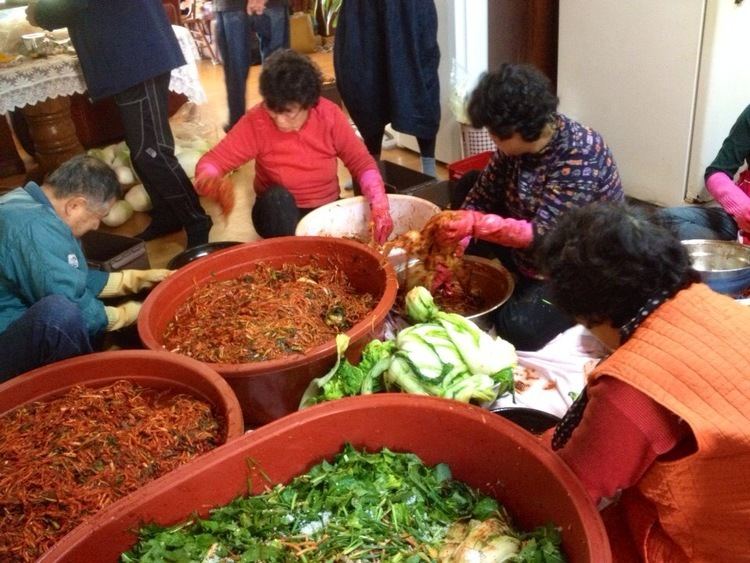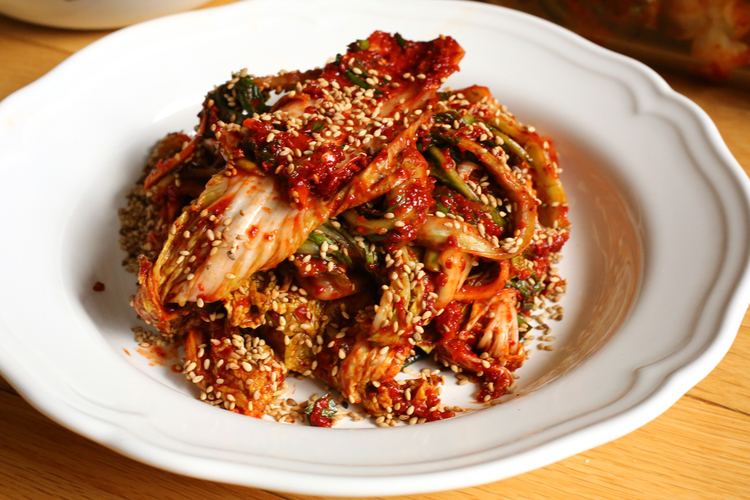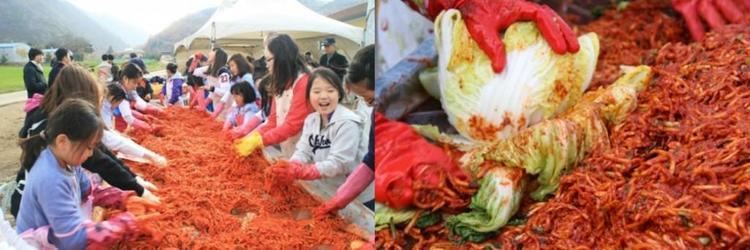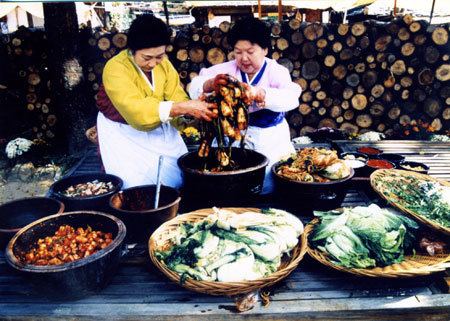Hangul 김장 McCune–Reischauer Kimjang | Revised Romanization Gimjang | |
 | ||
Similar Kimchi, Napa cabbage, Jeotgal, Saeu‑jeot, Bossam | ||
Gimjang (김장), also spelled kimjang, is the traditional process of preparation and preservation of kimchi, the spicy Korean pickled vegetable dish, in the wintertime. During the summer months, Kimchi is made fresh, from seasonal vegetables. For one month, starting from the tenth moon of the year, people prepare large quantities of kimchi, to provide nutrition throughout winter.
Contents

Gimjang was listed as an UNESCO Intangible Cultural Heritage in December 2013.
Hansik of the day ep 7 gimjang day kimchi full episode
Customs

Kimchi can be eaten as an accompaniment to almost any meal, and is an important part of Korean culture. Recipes date back to at least the 13th century, when it was made from vegetables, pickles and either salt or a mixture of alcohol and salt. Red pepper was added to the ingredients in the 17th century. Modern day kimchi is typically made from napa cabbage and white radish, although there are hundreds of variations; it may also contain turnip, leek, napa cabbage, carrots, and garlic.

In the cooler weather of November, there are lots of crops in the fields and market-places, and the Gimjang process begins. The labour-intensive task is shared by families, relatives and neighbours. Groups of Korean people gather to cut the vegetables, wash them, and add salt to cure the food and begin the fermentation process. The nature of kimchi means that it is challenging to store for long periods; if it is too cold, it will freeze, and if it is too warm, it will over ferment, and may turn sour. The traditional solution in the countryside and prior to effective modern refrigeration is to store kimchi in earthenware jars in the ground, buried up to the neck level of the jar to prevent the contents from freezing. As the temperature falls below 0 °C, fermentation is halted and the food is preserved; it begins again as the temperature increases in spring time.

The strong odours of kimchi can taint other products in a refrigerator, and despite modern advances in refrigeration, the custom of gimjang continues to be passed down the generations. Even some modern city dwellers store large jars of Gimjang on balconies. although some families have a dedicated fridge just for kimchi.

In an attempt to combat the increasing popularity of mass-produced kimchi, which is convenient for modern life, Seoul has created the world's only kimchi museum, where tourists and local people can sample different types of the pickle, and learn about the traditional gimjang process. Although consumption figures have fallen, Koreans still consume 25 kilograms (55 lb) of Kimchi per head each year.
Ingredients may include cabbage, white radish, spring onion, garlic, ginger, onion, chilli powder, salt and sugar.
